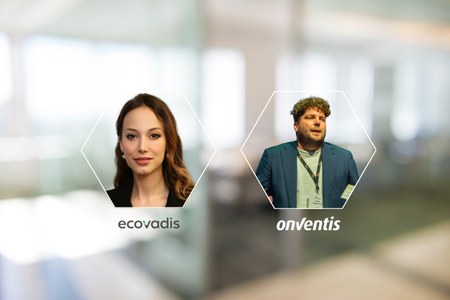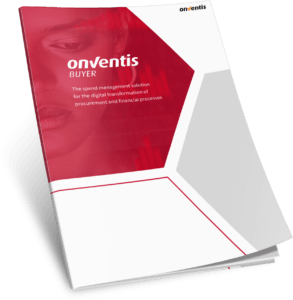How Procurement is Leading the Sustainability Charge
Insights from Onventis and Ecovadis
Sustainable procurement is no longer a “nice to have”, it’s a strategic imperative. We spoke with Jerker Vulperhorst, Managing Director Benelux at Onventis and Suzie Dekker, Account Executive Benelux at EcoVadis to explore how organizations can balance ESG goals with profitability and resilience.
Source: This interview was first published by Procurement & Supply Chain Masters.

A shift in expectations
Procurement teams are facing pressure from every direction: customers, investors, employees, and regulators. As Jerker notes, “The EU Green Deal, CSRD, and CSDDD are pushing companies to rethink their sourcing strategies. Procurement can now drive real change across the value chain.”
Suzie adds that the landscape has evolved rapidly: “When I joined EcoVadis four years ago, I was explaining why sustainable procurement mattered. Now it’s mandated by law. Companies that act now are getting ahead.”
ROI and Resilience
Investing in sustainable procurement pays off. Suzie points to Coty’s decision to remove a small metal plate from its fragrance packaging: cutting emissions, reducing costs, and boosting brand value.
Jerker adds that sustainability leads to stronger supply chain resilience: “Start with a spend and emissions analysis. It helps you find the hotspots, act strategically, and prepare for regulatory reporting.”
Key metrics to track
Both experts agree: measuring scope 3 emissions is critical. Other metrics include:
- Supplier ESG ratings
- Share of spend with certified suppliers
- Supplier engagement and due diligence completion rates
- Reduction in environmental and social risks
Overcoming barriers
Implementing a sustainable procurement strategy is not without its challenges. According to both EcoVadis and Onventis, the key barriers fall into a few critical areas:
- Evolving regulations:
New directives like CSRD, CSDDD, and CBAM demand greater transparency and traceability from procurement teams. But the legislative landscape is still evolving. “Keeping up with shifting requirements across different countries and industries is a full-time job,” Suzie explains. The recent Omnibus Package, for example, significantly reduced the CSRD scope, causing confusion about compliance thresholds. - Supplier engagement and data collection:
Many suppliers—especially SMEs—lack the maturity or resources to provide detailed ESG data. “Motivating suppliers to participate and ensuring they understand what’s being asked of them is a recurring challenge,” says Suzie. “You can’t just demand sustainability metrics. You need to educate, guide, and often handhold.” Tools like EcoVadis help suppliers benchmark themselves and improve gradually. - Internal resource constraints:
Procurement teams are being asked to deliver more without additional staff. “Most companies aren’t doubling their procurement headcount to meet ESG goals,” Jerker notes. “They have to work smarter, which makes automation essential.” Platforms like Onventis help streamline tasks such as supplier onboarding, emissions tracking, and risk monitoring. - Siloed systems and fragmented data:
Without integrated systems, data is scattered across departments or spreadsheets, making ESG reporting inefficient and error-prone. Organizations need connected digital tools to collect, analyze, and report on sustainability data in real time. “A lack of digital readiness can seriously slow down progress,” Jerker warns. - Strategic alignment and buy-in:
Getting executive support is crucial. “You need procurement, finance, sustainability, and IT aligned,” says Suzie. “And that starts with a clear business case that shows how ESG initiatives support resilience, reduce risk, and drive innovation.”
Ultimately, the most successful companies are those that treat sustainable procurement not as a compliance burden but as an enabler of competitive advantage.
From compliance to competitive advantage
Onventis equips mid-sized companies with the technology to meet rising ESG demands without needing to scale procurement teams dramatically. CO₂ data, supplier certifications, and ESG metrics are seamlessly woven into daily procurement decisions, making it easier to act on sustainability goals with speed and confidence.
Meanwhile, EcoVadis enhances this approach by providing supplier-specific ESG ratings and benchmarks. These insights can be integrated into the Onventis platform to enrich supplier risk profiles, strengthen qualification processes, and enable targeted improvement programs.
Final advice
For companies just getting started, Jerker advises: “Know where your money goes. Use spend data to identify carbon hotspots and prioritize improvements.”
Suzie agrees: “Assess your program maturity. If you’re still managing ESG data manually, consider solutions that enhance integrity and scale your impact.”
Weitere BlogsMore BlogsMeer blogs




